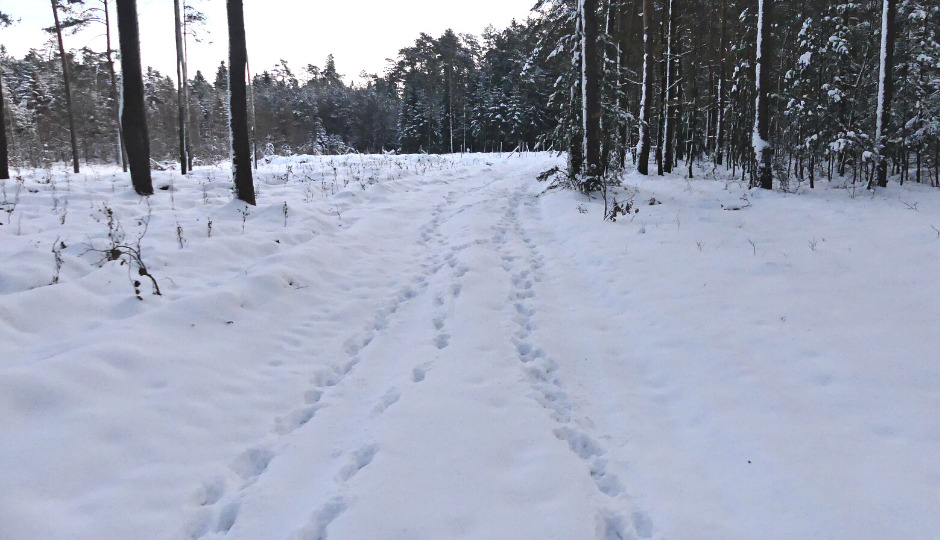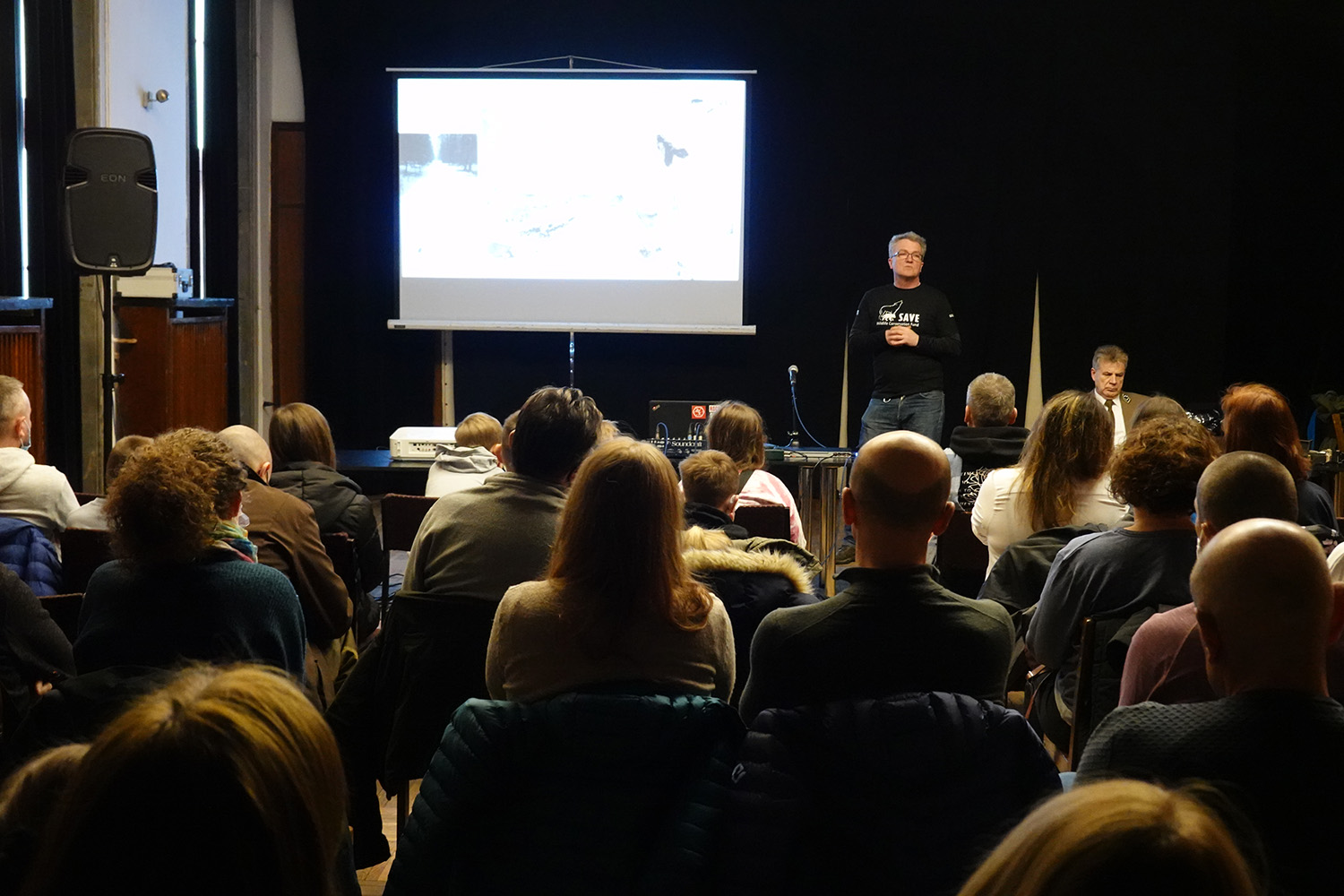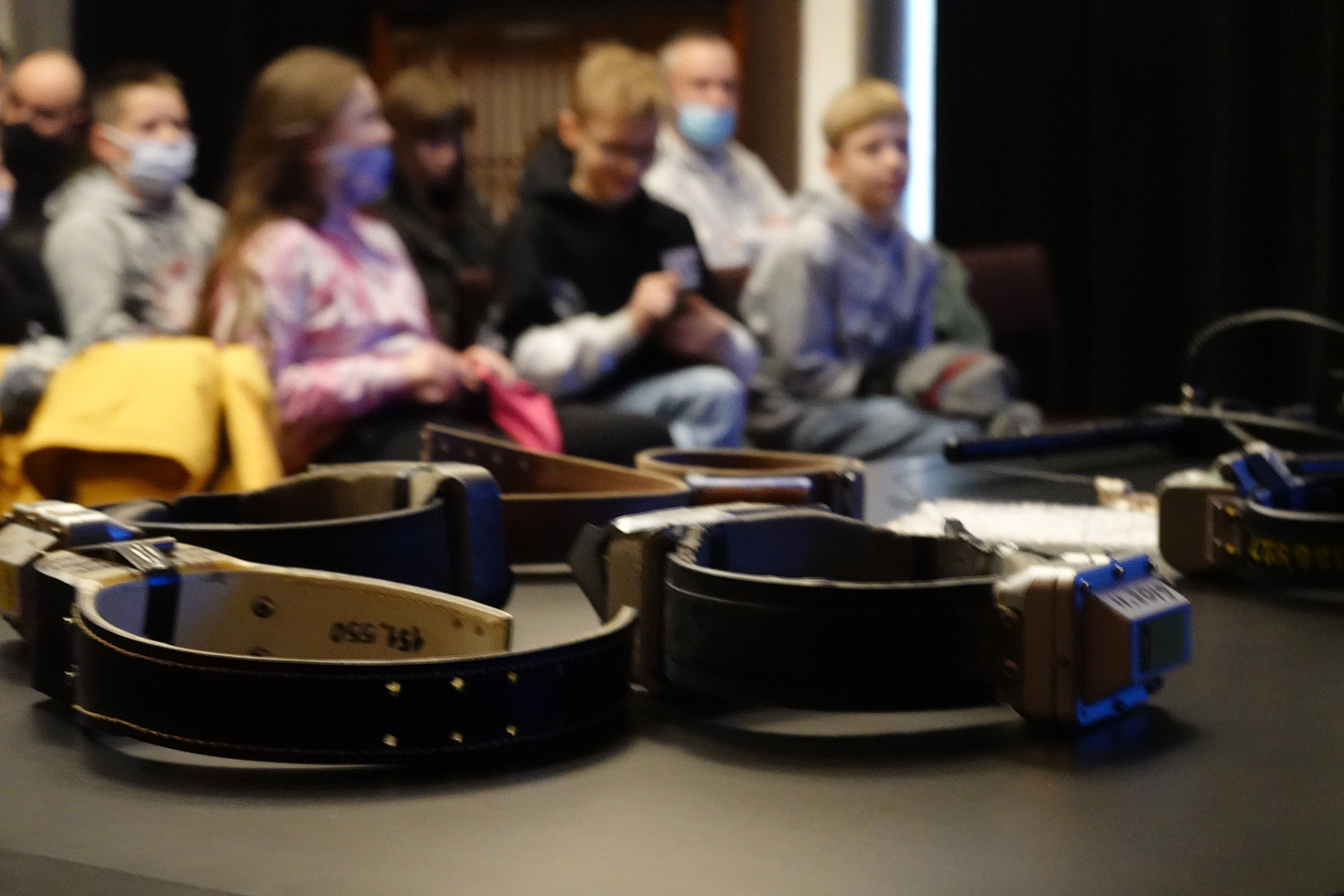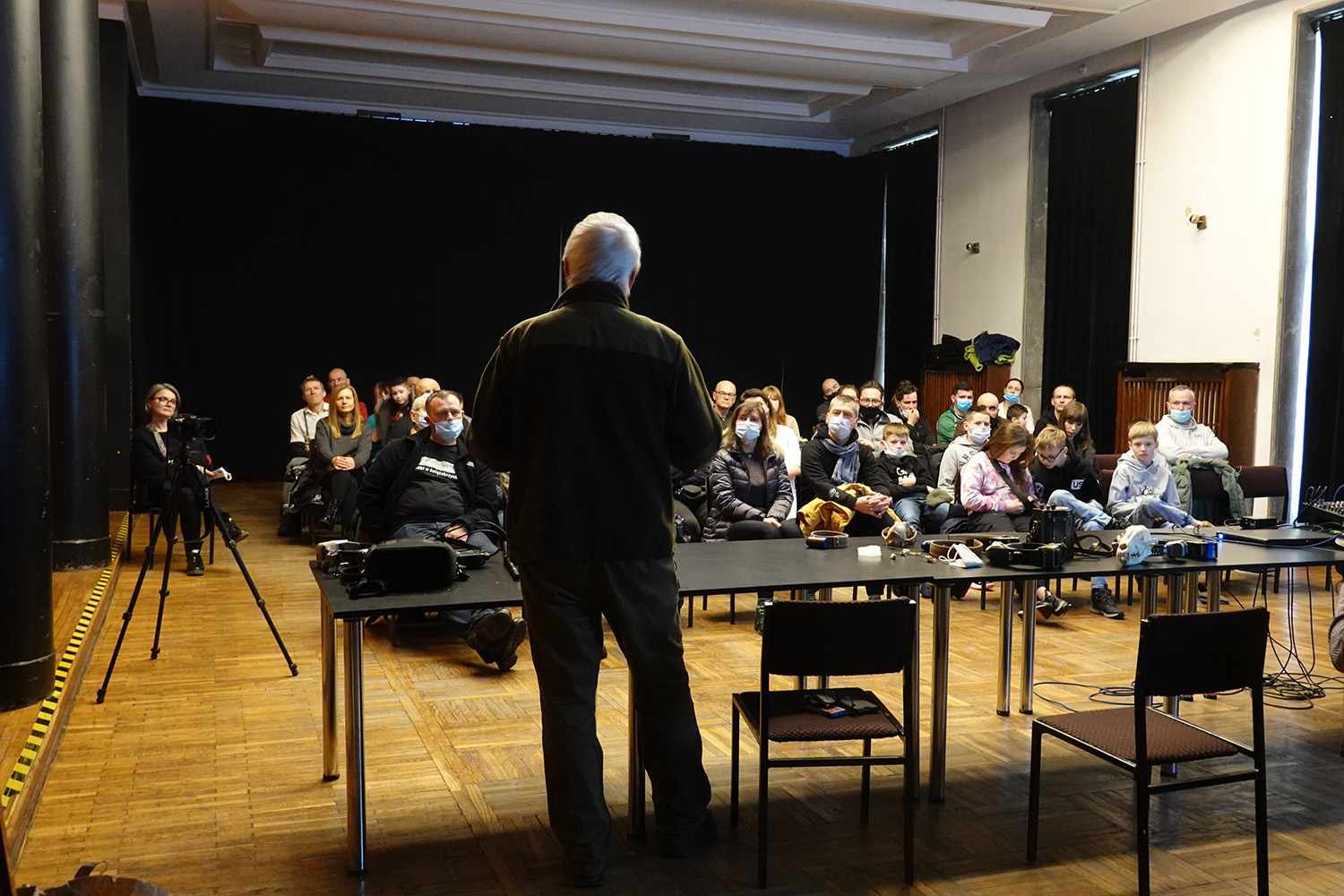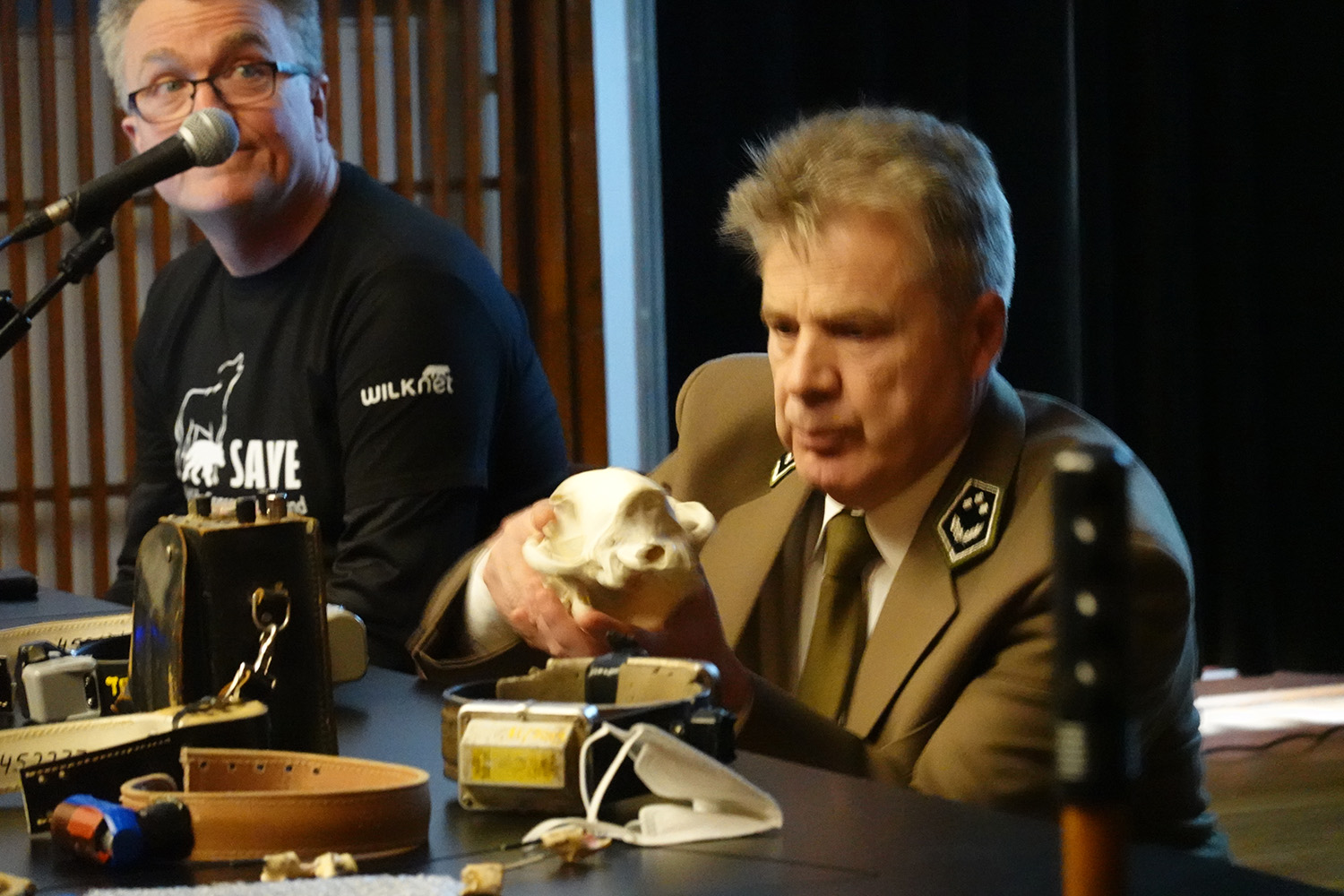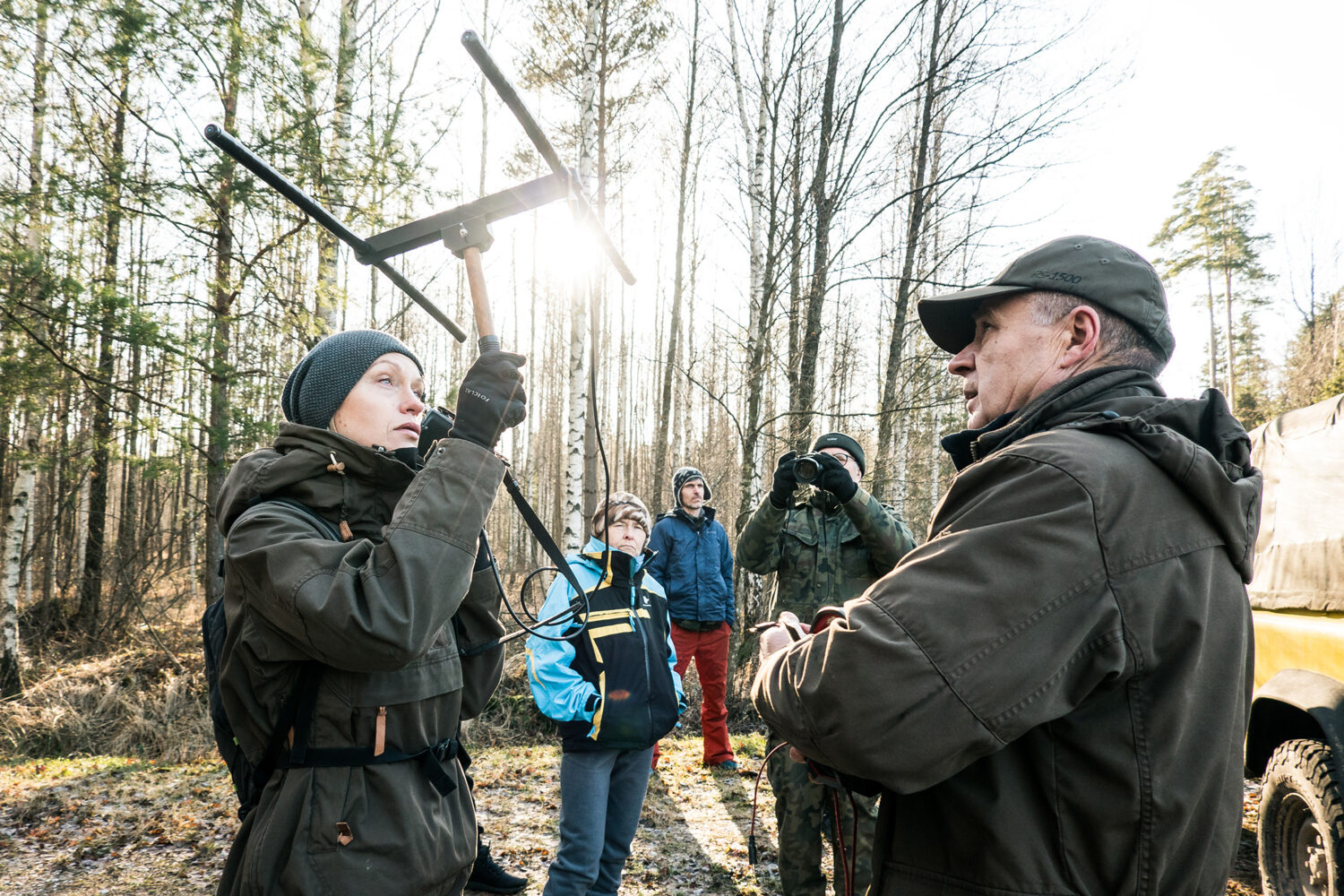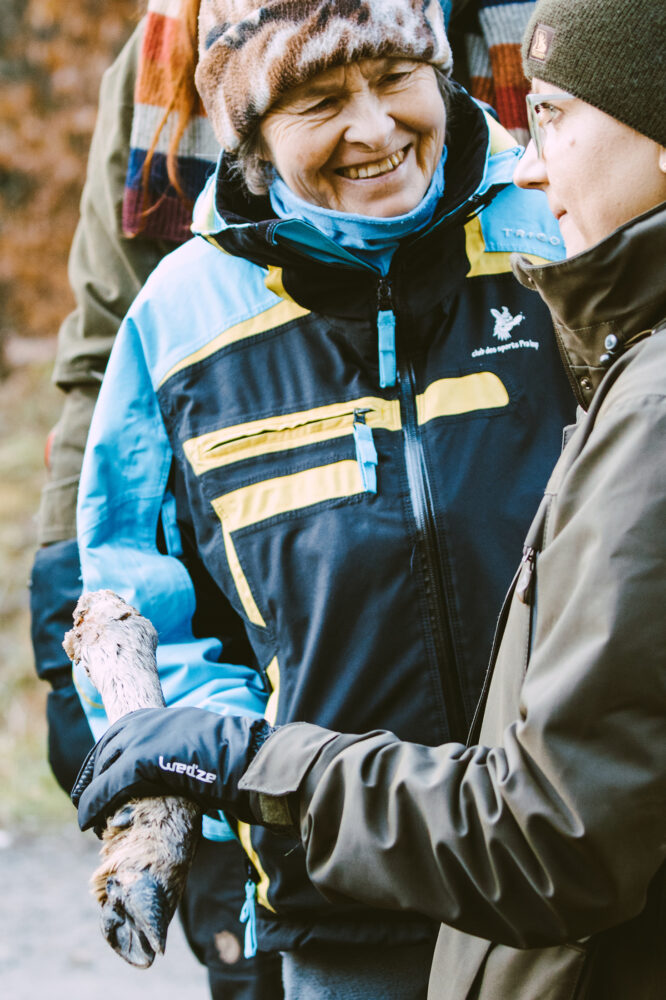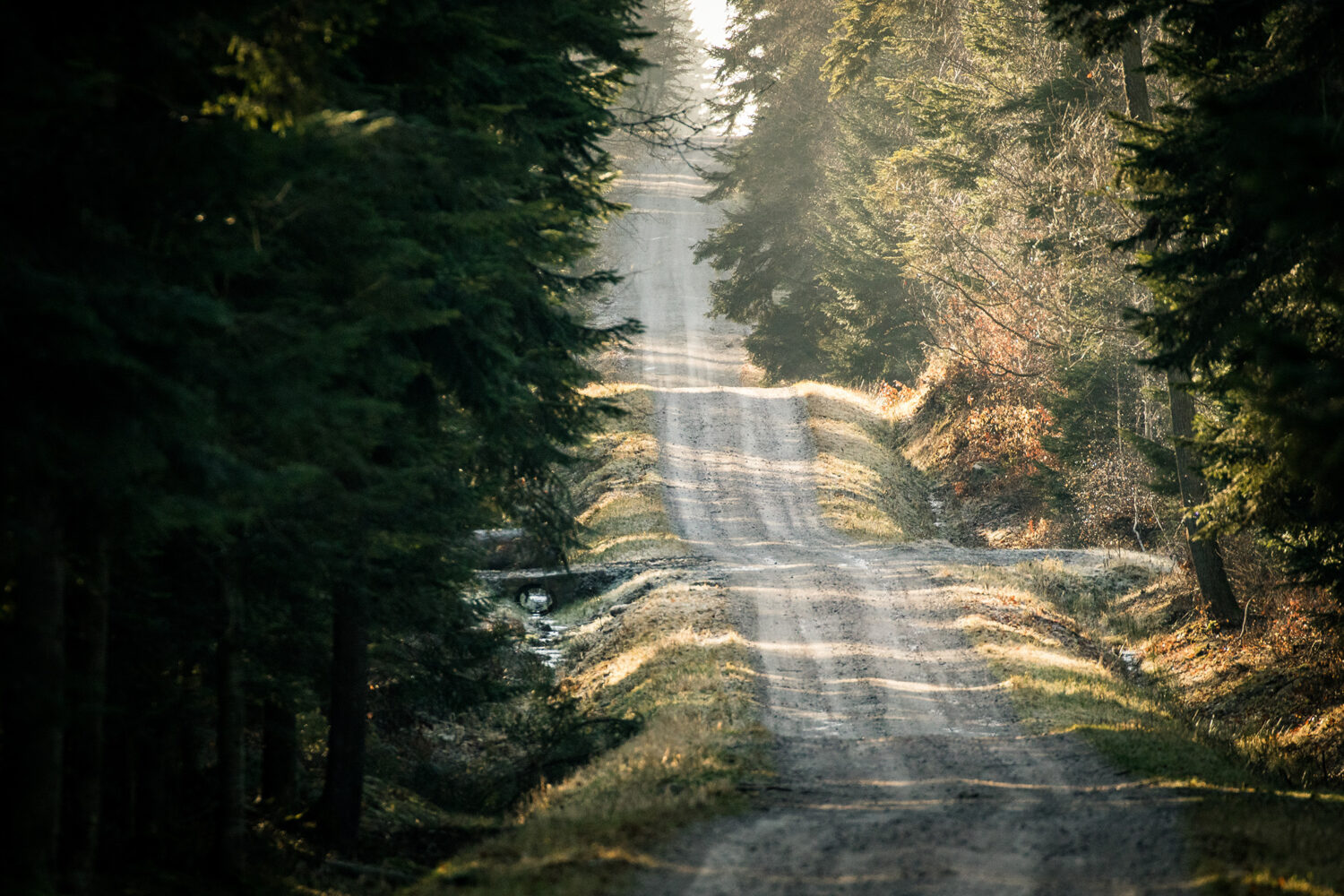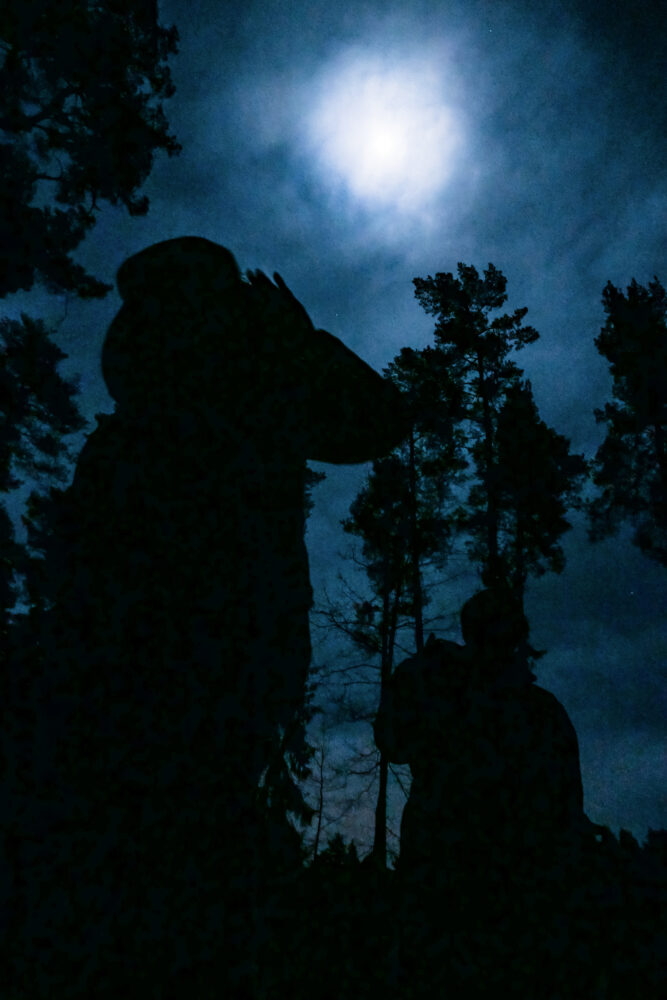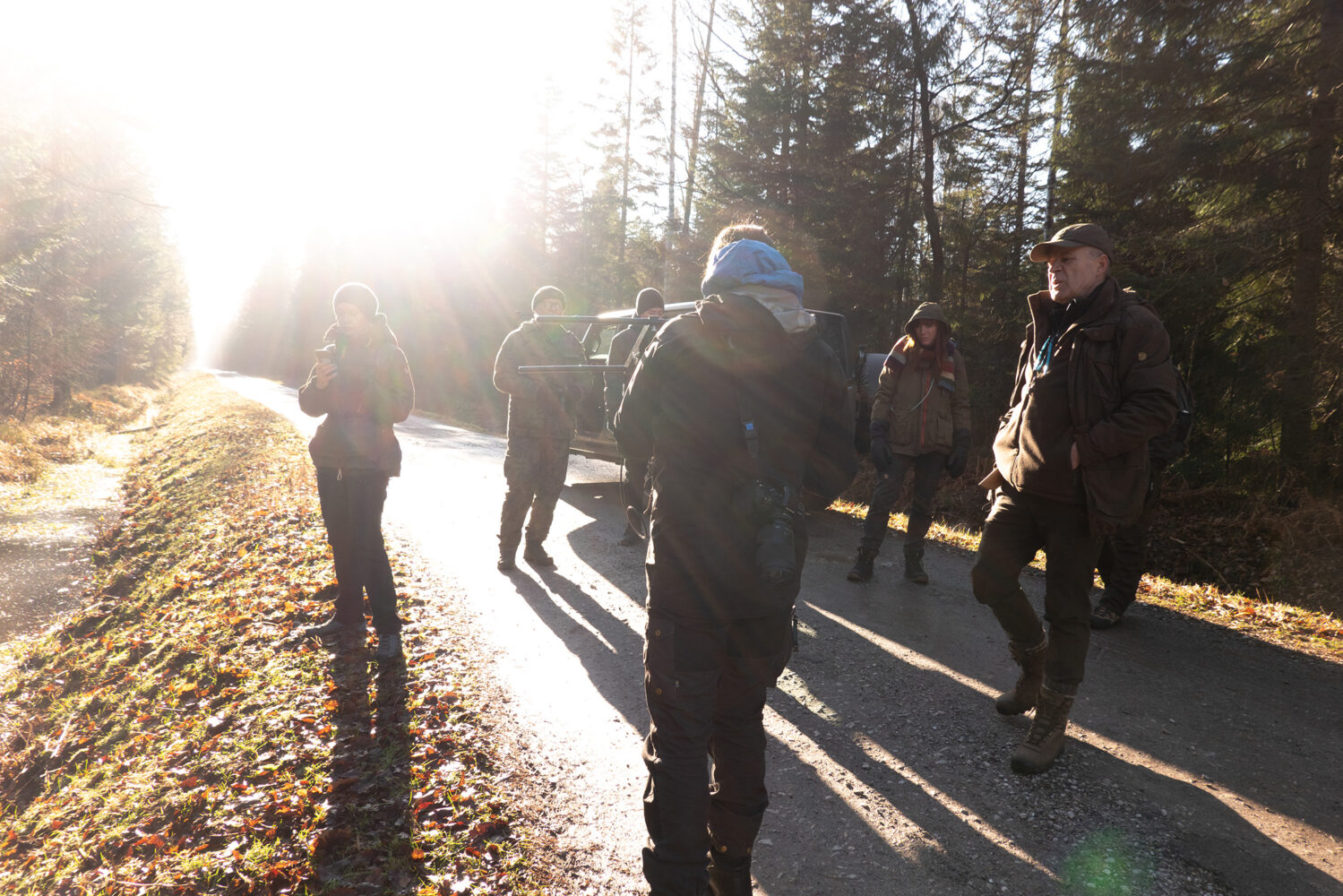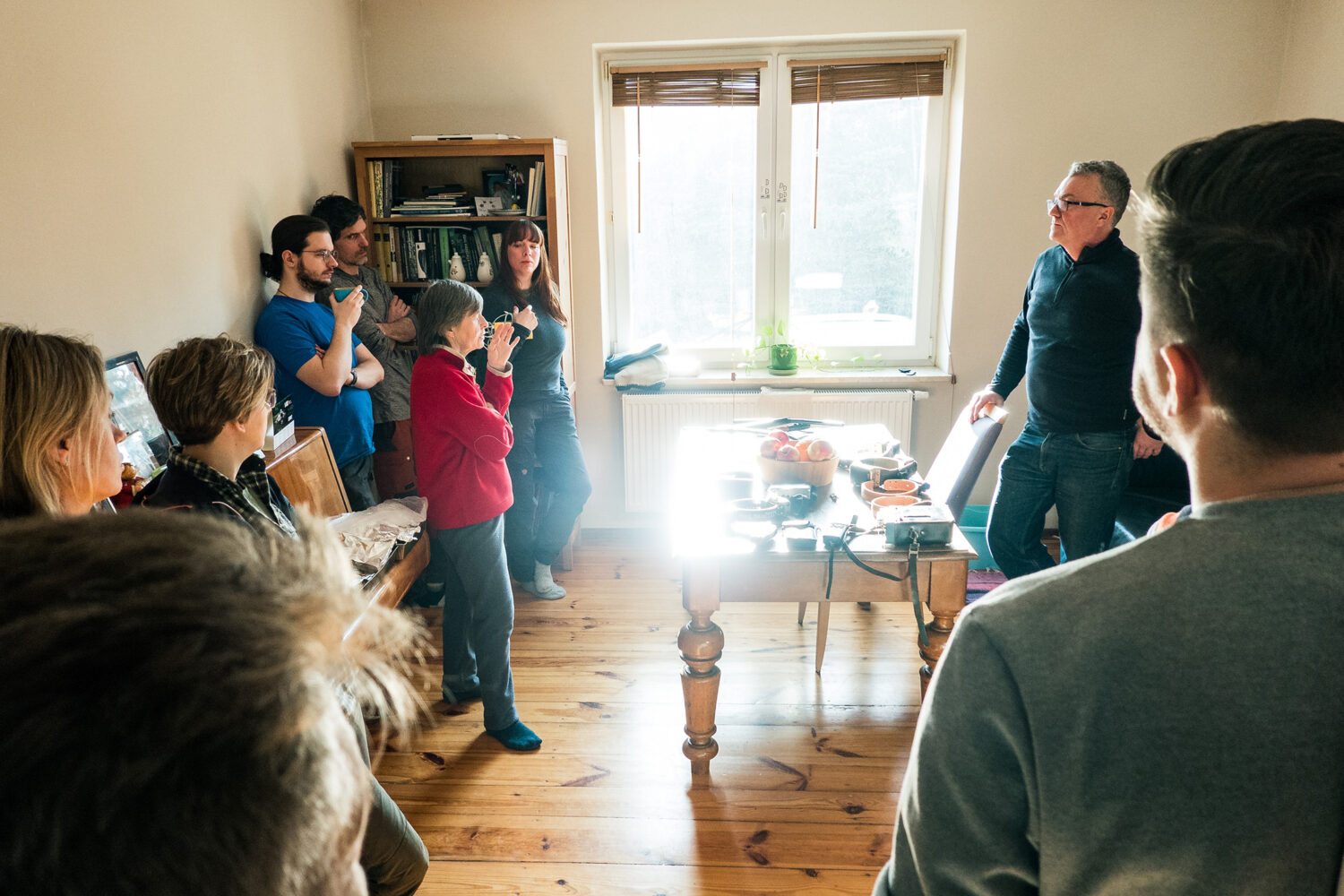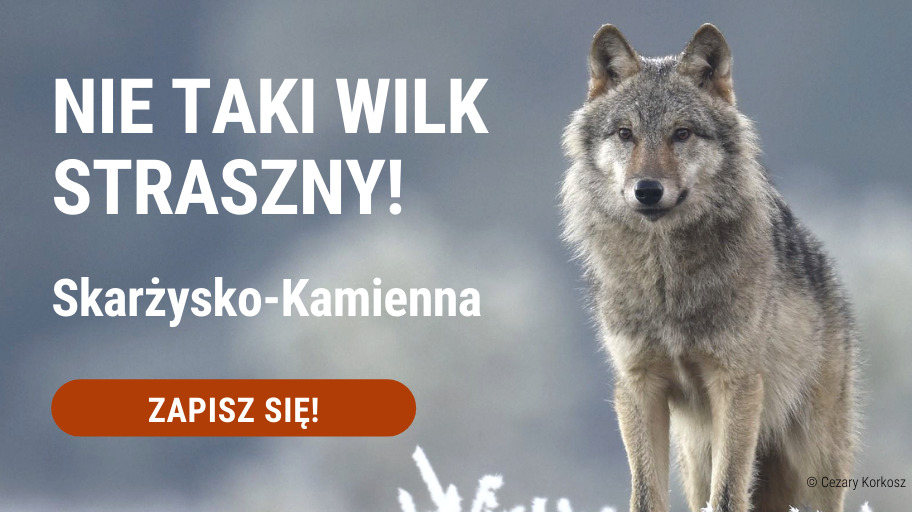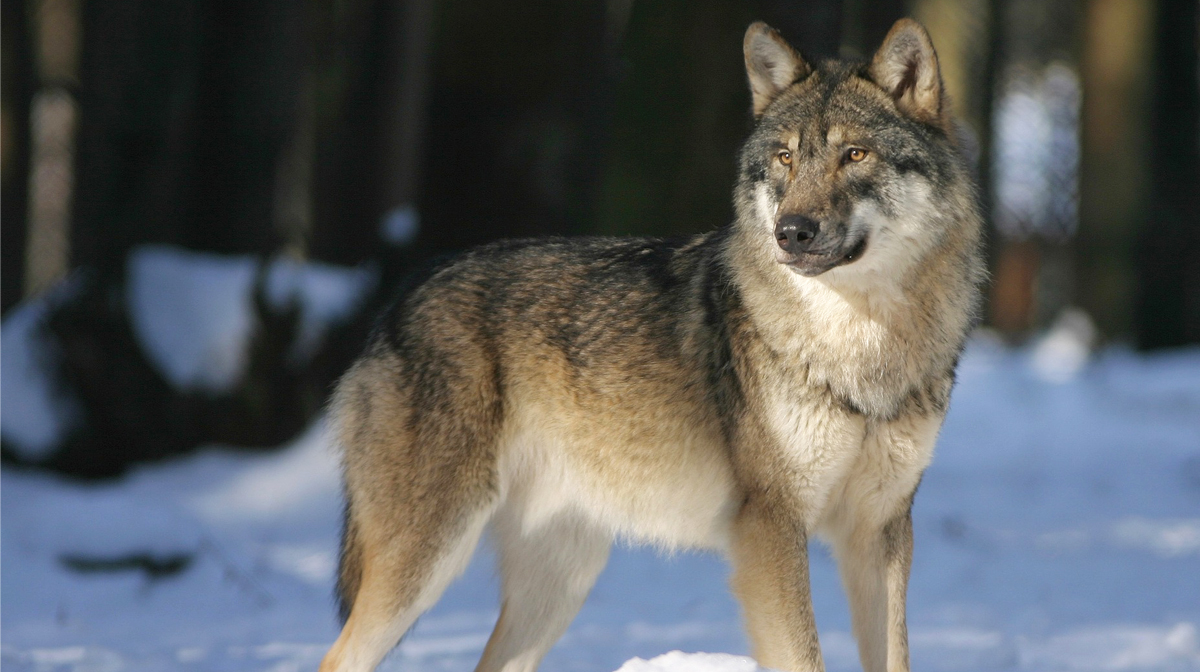Summary of winter in the forests of Daleszyce
Summary of winter in the forests of Daleszyk
During the period from the beginning of November 2021 to the end of March 2022, we continued monitoring the wolf family from the Daleszyce forest.
We noted numerous traces of wolf presence in the field in the form of: droppings, tracks, urine marking and remains of prey. Several times we were able to register wolves with the help of photo-traps. The biggest registered group consisted of 7 individuals. In spite of the fact that there were not many days with snow cover, we managed to track wolves in the snow several times. We tracked from 1 to 7 individuals and the maximum distance over which we could continue tracking was about 3 km.
In February, we found a rendez-vous site of 2021, where we collected a large amount of droppings. At the rendez-vous site we also found several toys of young wolves – bitten plastic bottles, cans, a plastic swimming board, fragments of thick animal bones, and bitten antlers of deer: elk and buck deer. We also found the remains of several prey, mostly roe deer, and several lairs where wolves rested.
In late February, we had the opportunity to directly observe a large male wolf that came within about 20 m of us in response to our earlier howling. The wolf did not sense, see or hear us. When it saw one of us it abruptly stopped, turned and fled in the direction from which it came.
In March there was less wolf activity around the rendez-vous. We found droppings and tracks (1 to 3 individuals), but photo traps did not register any of the predators. In the vicinity of wolf tracks we found several remains of wolf prey.
Authors: Tomasz Bracik, Mariusz Wlazło, Paweł Gola
Jackals, the mini-wolves
Mini-wolves, a new species in the fauna of Poland.
In recent years, a new species of predator has appeared in our part of Europe. Unlike the raccoon or American mink, it was not introduced by humans, but came on its own from the Balkans as part of the largest natural expansion recorded so far.
Golden jackal (Canis aureus) in many ways resembles a wolf, although its weight does not exceed 15 kg. Like wolves, jackals live in family groups and communicate through howls. However, their acreages are much smaller than wolf areas, and they prefer wetlands with reeds and bushes to large forest complexes.
The expansion of jackals in Europe is very controversial as little is known about their role in nature and policymakers do not know how to manage this new species. In Poland, despite the extremely low numbers, the jackal is currently a game species.
The Institute of Nature Conservation of the Polish Academy of Sciences has launched a research project devoted to the ecology of the golden jackal. We carry out research in southern Poland. In the videos recorded with camera traps, you can watch a pair of breeding jackals that move together and mark the territory. In the second, night sequence, the male tenderly heats the female during estrus.
Author: Katarzyna Bojarska
Wolves with symptoms of scabies
Wolves with symptoms of scabies
We registered wolves with clear symptoms of infection with Sarcoptes scabiei, a skin parasite that also attacks humans.
In January this year, I registered for the first time three wolves with scabies symptoms in the Lipie forest complex. They appeared later several times on the recordings from photo traps which we placed in this area. They were probably young wolves from last year’s litter.
Despite the signs of infection – a shedding coat and tail – they showed no signs of poor condition or a more severe course of the disease. They registered in the company of adult wolves who did not show signs of infection. They were probably aided in their survival by the not-so-harsh winter. We observed two of them again in March – they managed to survive the worst period, so they have a good chance to fight the infection which is not always fatal for wolves.
Author: Jacek Major
Autumn in Daleszyce forest
Autumn in Daleszyce forest
Summary of wolf monitoring from forests in Daleszyce area.
From the beginning of September to the end of November 2021 we continued the monitoring of the wolf family in the daleszyckie forests. We often noted droppings, tracks, urine markings, and remains of wolf prey. We have managed to register wolves many times with the help of photo-traps. Despite the multiple voice stimulation of howling, we have never managed to get an answer from the wolves, which could be related to the changing weather conditions prevailing at that time.
In September, one of the photo-traps registered at the meeting point (rendez-vous) the presence of a wolf family consisting of at least 8 individuals – a reproducing pair, one adult (a young male, probably a descendant from the previous year), and 5 puppies at the age of 5 months. Predators were active both during the day and at night, but were most often recorded at night. Puppies were often recorded, and the largest registered group consisted of 6 individuals (5 puppies and 1 adult individual). Registered puppies looked well fed and vital.
In October and November, wolves recorded themselves for photo-traps much less frequently, and they were always single individuals active at night. However, we recorded a lot of droppings and tracks of 1-3 wolves. In the vicinity of the wolf paths, we also found the remains of wolf prey, mainly roe deer, but also wild boar and deer.
At the beginning of October, employees of the Łagów Forest District photographed 4 wolves at night (using a photo-trap), two of which looked like grown puppies. The photos were taken near the place where we recorded wolf puppies in September.
Author: Tomasz Bracik, Mariusz Wlazlo, Lukasz Tomasik
Meeting about wolves in Skarżysko-Kamienna
Meeting about wolves in Skarżysko-Kamienna
On Sunday, February 20, we organized an educational meeting about wolves called “Not such a scary wolf” in the Municipal Cultural Center in Skarżysko-Kamienna.
The interest exceeded our expectations. Due to the limited number of seats in the room where the meeting was to be held, we conducted online registration. We received applications not only from Skarżysko-Kamienna, but also from Radom, Kielce and even from distant Warsaw! We quickly ran out of free places and had to introduce a reserve list.
The meeting started at 2 p.m. and for about 2 hours we were talking about wolves living in the forests around the city and about our research.
In the first part of the meeting the project manager, Roman Gula, PhD, presented the specificity of the wolf species and the history of its conservation in Poland. Using the example of wolves monitored by our Foundation, he described what the life of a wolf family looks like and answered many interesting questions asked by our guests concerning e.g. safe work with wolves.
Next, Artur Milanowski showed how we use telemetry collars for monitoring and, together with Prof. Gula, demonstrated the operation of the antenna used for tracking. In the next part, Jacek Major briefly presented photo traps, and in the last part we outlined the specifics of genetic research on wolves and why we do it. During the meeting, the participants, including children, had the opportunity to see the equipment we use up close and even take a real wolf skull in their hands.
The meeting would not have taken place if it had not been for the support of the employees of the municipal cultural center, headed by Director Grażyna Majewska, who provided us with a room with the necessary equipment. Thank you very much!
Author: Joanna
Photos: SAVE and Mateusz Bolechowski
Wolf attacks on livestock in Podkarpacie - 2021 report
Wolf attacks on livestock - 2021 report
Compiled from 2021 data, the report clearly shows that the level of damage caused by wolves remains steady and is not increasing.
Analysis of the 2021 data report clearly shows that the level of damage caused by wolves remains at a similar level and is not increasing. The number of wolf attacks on livestock in 2021 was 132, comparable to 2020 (135 attacks) and lower than in previous years (167 attacks in 2019, 166 in 2018), despite the fact that the number of wolves in Podkarpacie seems to be systematically increasing.
According to data from the second half of 2021 (July 1 – December 31), there were 98 wolf attacks on livestock during this period. This is a slight increase from the second half of 2020, when there were 91 attacks, but a decrease of as much as 26% from the second half of 2019, when there were 122 attacks.
The species most frequently attacked by wolves in the second half of 2021 were sheep (68 attacks), followed by cattle (7), horses (6), goats (4), and fallow deer and farmed deer (12).
Summing up the entire year 2021, there were 132 attacks on livestock. Additionally, there were 108 confirmed wolf attacks on dogs in farmyard areas, and about 30 reports of wolves appearing between buildings or in close proximity to people.
Source: Hubert Fedyń, RDOŚ in Rzeszów
1% for wolves!
1% for wolves!
Help us protect wolves and forest ecosystems!
We are a public benefit organization, so please – remember about us when filling out your PIT!
1% is a lot for our wolf monitoring project. Photo-traps, telemetric collars, equipment to catch and collar wolves, gasoline, scientific research (including genetic) – all this costs a lot. Without the support of people like you, we would not be able to function.
Through our actions, focused on education and obtaining reliable data on the status of the wolf population, we are trying to change the image of the wolf to a more positive one and to consolidate in society a love of Polish nature and pro-ecological attitudes.
Protect the wolf and Polish nature with us!
Our data:
Fundacja SAVE – Wildlife Conservation Fund
ul. Polna 7, Komorniki; 55-300 Środa Śląska
KRS: 0000399896
Wolf educational meeting - Skarżysko-Kamienna 20.02.
Wolf educational meeting - Skarżysko-Kamienna 20.02.
We invite you to an educational meeting about wolves, which will take place on Sunday, February 20 in Skarżysko-Kamienna. There will be a lot of interesting information about “our” wolves and a demonstration of tools used in the work of a wolf researcher!
Meet Geralt the wolf and his family living in the woods around Skarżysko-Kamienna!
Where do they go, what do they do, how do they spend their time? And how to be on good terms with them?
- Get to know → Geralt and other “our” wolves
- SEE → What the work of wolf researchers looks like
- LISTEN → Stories and anecdotes from wolf hunting
- SEE → how to peacefully coexist with a wolf behind a fence
- TOUCH → wolf skull and determine age of the wolf by its teeth
- LEARN TO → howl like a real wolf and recognize its tracks
Professor Roman Gula, a lecturer at the Polish Academy of Sciences and the head of our Foundation’s wolf monitoring and conservation project, will talk about wolves, nature and ecology.
Other speakers will talk about the daily work of wolf researchers: Jacek Major and Artur Milanowski, long-time wolf experts with vast experience.
We will answer questions:
– do wolves howl to the moon?
– What should we do if a wolf crosses our path?
– How to live peacefully with a wolf?
– Are wolves useful?
– How to recognize wolf droppings and why are they so interesting?
– and many, many more!
FOR WHO?
– for older kids and adults
WHERE?
– Municipal Cultural Centre in Skarżysko-Kamienna, 25 Słowackiego St.
WHEN?
– Sunday 20.02.2022, 14:00-16:00
REGISTRATIONS:
– at zapisy@fundacja-save.pl
Number of places limited. Admission free!
THE MEETING WILL BE HELD IN POLISH
Wolf researcher's workday
Wolf researcher's workday
Take a look at the field work of our wolf monitoring project – the English subtitles attached!
Wolf monitoring is a series of activities that are carried out periodically in a given area. Walking the length and breadth of the forest in search of signs of wolf presence is a major part of this activity, as is collecting wolf droppings found on the ground.
Jacek Major, the author of beautiful drawings and a wolf expert who has been working with our foundation for years, tells us about a typical day in the field.
January "Wolf workshop" report
Report from the January "Wolf Workshop"
On Saturday, January 15th, in the forests near Skarżysko-Kamienna another “Wolf workshop” organized by our Foundation took place.
During the workshop the participants had the opportunity to get acquainted with the specifics of wolf researchers’ work, to collect their own material and to try to track one of the collared wolves using professional equipment.
The workshop started at 11:00 with a presentation of telemetry technologies. Participants were able to see up close the telemetry collars used in the past and those we use today.
After a brief lecture on telemetry, the plan for the next few hours was presented, and then we headed into the woods to search for Geralt the wolf.
On the trail of Geralt
Geralt, a young male collared by us in late 2021, was located by our volunteers on the morning of the same day. We had hoped to find him again during a workshop in the same area, unfortunately it was not that easy. The hunt that took place just before the workshop had scared away the animals from the part of the forest where Geralt had been in the morning. He also disappeared from our “radars”.
During the several hours of searching for the signal from the wolf’s collar transmitter, we found many interesting traces left by the forest inhabitants. Almost at every step, wolf droppings were waiting for us, which we collected to analyze the wolf diet. Each of the participants had a chance to see how the work of a field biologist looks like and to collect, label and bag wolf droppings with their own hands. At the same time, the participants were able to see with their own eyes what a wolf’s diet looks like. Hair and even pieces of bone were clearly visible in the droppings!
An interesting find was a deer leg lying on the side of the road, most likely the remains of a meal of one of the wolves.
Driving through the forest in all-terrain vehicles we stopped a few times and tried to track down Geralt. The participants took on the role of researchers operating the antenna, and listening to the noise of the ether they tried to pick out the cyclical beeps indicating that the collar was tracked. Unfortunately, to no avail. However, on our way back to the base we came across wolf tracks, most probably from the previous day, as well as some more droppings, which due to the interesting smell aroused exceptional emotions in our participants.
Howling under the full moon
After returning to the base we went for a common meal, followed by a lecture on wolves and the activities of our foundation. Around 7 p.m., when we received fresh GPS data on Geralt’s location, we set off into the forest again. Near the place where the wolf should be, we called out. To the delight of the participants, after a few tense seconds we heard the answer! Not only did Geralt howl at us, but so did the rest of his family members – the entire pack answered us!
Since another attempt to elicit a response from the wolves failed, we drove on. At the next stop, we called out all together, the whole group. Although none of the wolves answered us, the excitement of howling together under a full wolf moon, in the middle of a dark forest, made up for it 100%.
Author: Joanna

